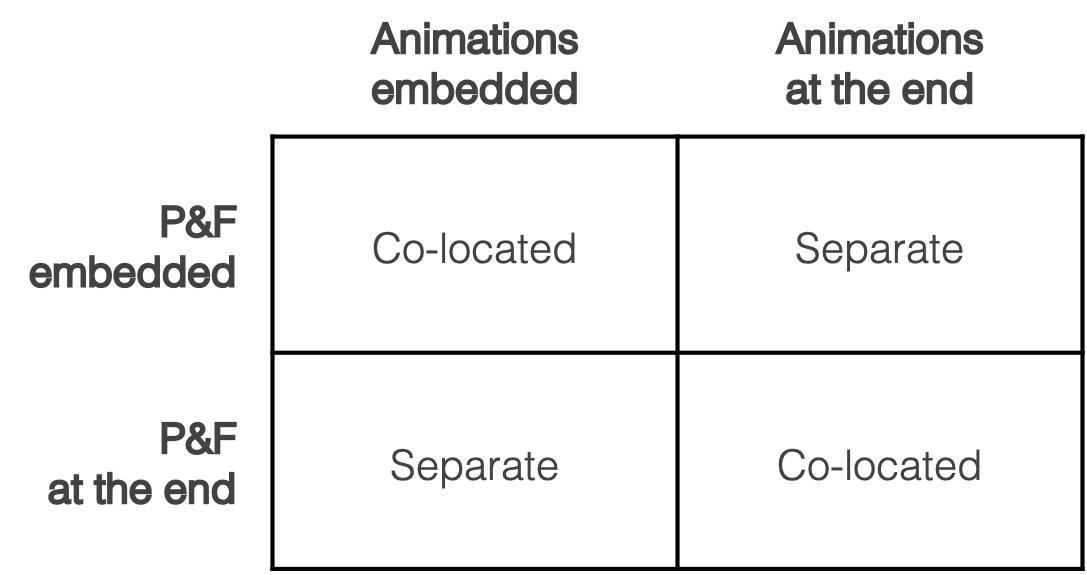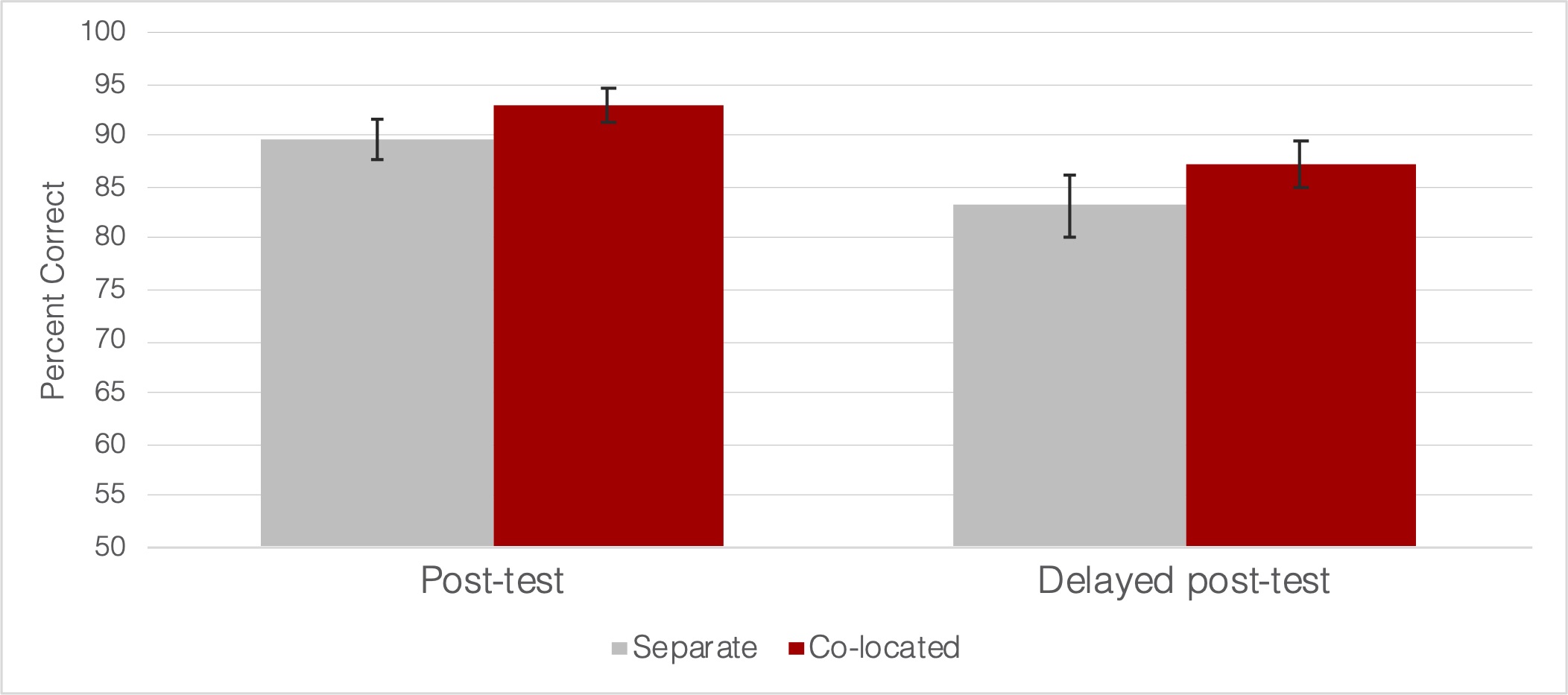How Do I Optimize My Digital Learning Assets?
Co-locating interactive animations and practice may be more effective. |
Modern Biology
Brasier’s Modern Biology course features online learning modules completed independently by students outside of class. Modules focus on the fundamentals of how DNA replicates and include a series of low-stakes practice and feedback opportunities (P&F) as well as short interactive animations that illustrate a variety of DNA processes. When it came to deploying those resources within the module, however, he faced several choices regarding how to best distribute them. Specifically, for both the interactive animations and the P&F, he had to decide whether to include each of them at the end of the module or embed them throughout the lesson along with their respective content. To evaluate these potential choices, he used a 2x2 design that had all students complete a pre-test, and then experience one of four randomly assigned conditions.

Figure 1. Matrix summarizing the four different positional combinations of resources for the OLI module.
Performance on a post-test immediately following the completion of the module was assessed, in addition to performance on targeted exam questions several weeks later (delayed post-test). Results showed that having the animations and P&F co-located within in the module led to better learning outcomes on both the immediate and delayed post-tests, compared to when the animations and P&F were presented separately (figure 2). Interestingly, whether the animations and P&F were embedded together throughout the module or presented together all at the end had no consequences for either assessment. These results could have implications for how to best distribute multimedia resources in an online learning platform.

Figure 2. Scores on the immediate post-test were higher when students experienced the module with the animations co-located with the practice and feedback (M = 91.25, SD = 9.89) compared to when they experienced the module with the animations separated from the practice and feedback (M = 88.75, SD = 11.42). On the delayed post-test, the students who got the co-located resources also scored higher (M = 94.95, SD = 6.66) compared to students in the separate condition. (M = 88.01, SD = 8.76). Error bars are the 95% confidence intervals for the means.
The mean difference between the conditions on the immediate post-test of 3.3 percentage points was statistically significant, 95% CI [4.86, 0.14], t (268) = 2.032, p < .05, d = .25. The mean difference of 3.9 percentage points between the conditions on the delayed post-test was also significant, 95% CI [7.25, 0.55], t (268) = 2.252, p < .05, d = .25.
Filters in which this Teaching as Research project appears:
College: Mellon College of Science
Course Level: Intro Undergraduate
Course Size: Large (more than 50 students)
Technology Enhanced Learning
